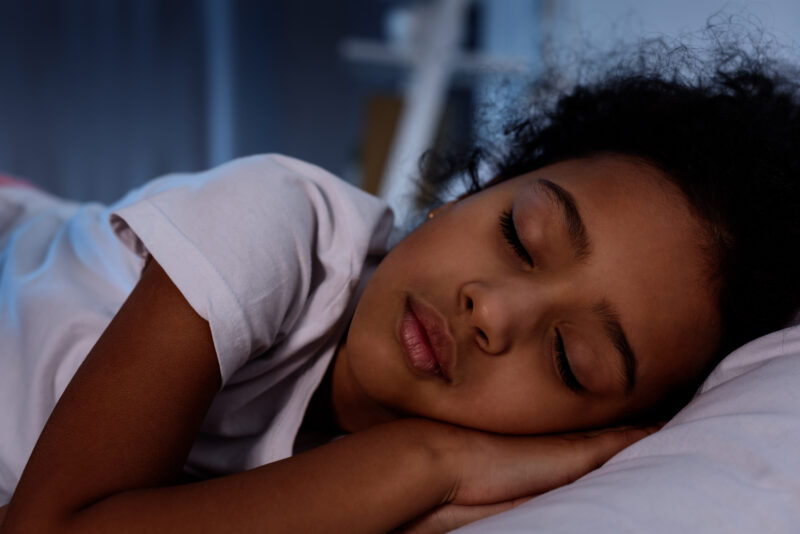
adorable african american kid sleeping in bed at home
On March 10, parents and kids alike can look forward to springing forward for more daylight in the evening. But Daylight Saving Time can throw a wrench in your baby, toddler or even teen’s sleep schedule. While the fall time change can cause kids to crash before bedtime and wake up earlier than usual in the morning, the springtime change can make it challenging for kids to get to bed at night or out of bed in the morning.

Jamie Travis, pediatric psychologist
Akron Children’s pediatric psychologist Jamie Travis shared how slowly moving naps and bedtimes forward in small, 15-minute increments every couple of days beginning about a week before the time change can help make the time change easier. In addition, Travis offered the below tips to promote good sleep habits, which are particularly important during the time change:
- Limiting screen time before bed. It’s best to keep the bedroom free from electronics, including TVs, game systems, smartphones or tablets. The blue light that electronics emit stimulates the brain and can suppress production of melatonin, making it more difficult to fall asleep.
- Creating a relaxing environment. Your child’s bedroom should be quiet, dark and at a comfortable temperature for sleeping. Consider room-darkening shades, earplugs or a fan to create a relaxing environment.
- Encouraging an active lifestyle and spending time outside. Being physically active during the day can help kids fall asleep more easily at night. Exercise can relieve stress and anxiety and tire children out. Just be careful to avoid getting heart rates up within 2-3 hours of bedtime to allow adequate time to winddown. Spending time outdoors each day also can support a healthy sleep-wake cycle.
- Following a consistent and calming bedtime routine. Build in intentional cues for sleep. Activities like dimming lights, taking a warm bath, brushing teeth, and reading can help your child’s brain associate that it’s time for sleep.










